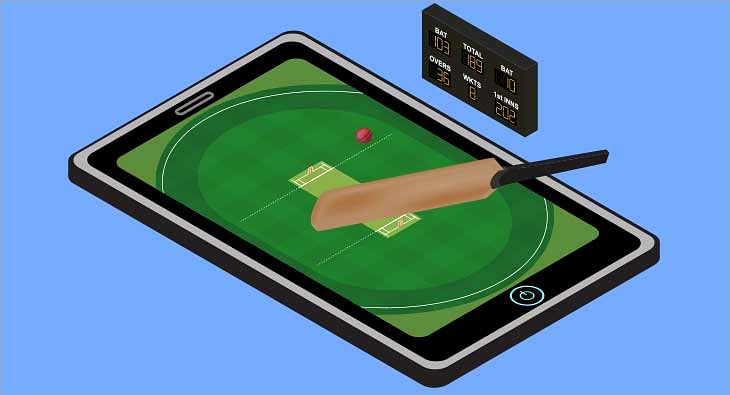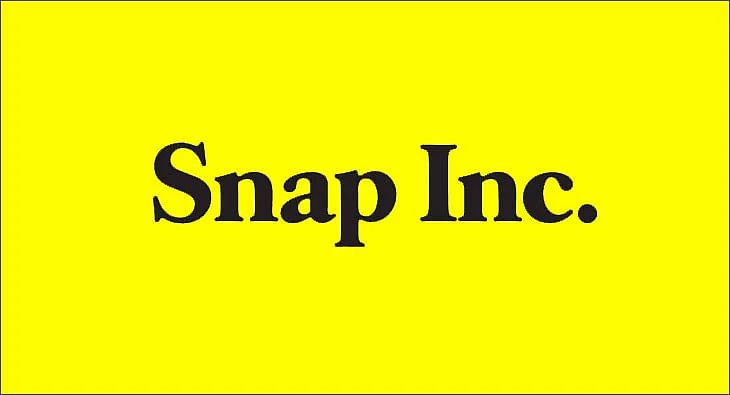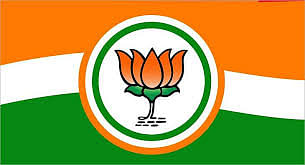Download dentsu-e4m Digital Advertising 2022 report
The report, which was unveiled on Feb 1, predicts that the digital media market size will reach Rs 27,759 crore by 2022-end
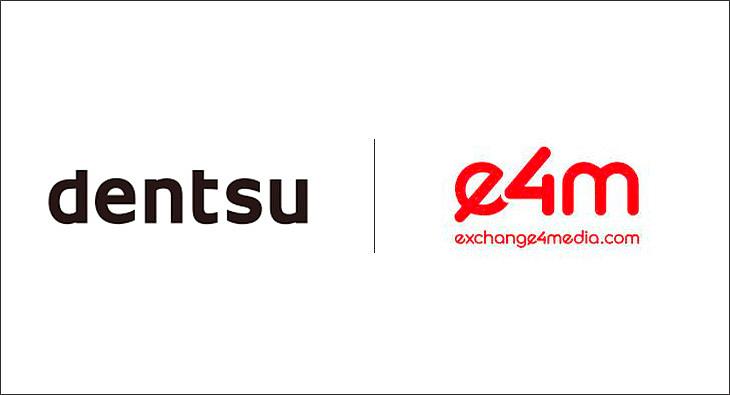
The much-awaited ‘dentsu-e4m Digital Advertising in India 2022’ report was unveiled on Tuesday.
To read the full report click on the link below.
https://e4mevents.com/dentsu-e4m-report-2022/
The ‘dentsu-e4m Digital Advertising in India 2022’ report unveiled today reveals that aided by the rapid shift of businesses and consumers towards digital media, the Indian digital advertising industry leapfrogged by 35% to reach Rs 21,353 crore by the end of 2021 from Rs 15,782 crore in 2020.
The highest proportion of spends on digital media has been claimed by social media (29%, Rs 6,218 crore), closely followed by Online Video (28%, Rs 5,907 crore). While paid search accounts for 23% (Rs 5,039 crore), display banners claim 16% of the spends (Rs 3,420 crore). Digital media, the report states, is expected to have a growth rate of 30% to reach a market size of Rs 27,759 crore by the end of 2022.
The report also notes that advertising spends on e-commerce platforms stood at Rs 6,300 crore in 2021, and is expected to grow at a rate of 36% in 2022. With e-commerce emerging as the digital backbone of the retail sector, many small and big players, especially from small metros and towns, have realized the immense potential that advertising on e-commerce platforms holds, it added.
As per the report, social media and online video remain the strongest platforms on digital media, seeing consistent growth over the years. With the newer offerings of social and video commerce, consumers are spending more time on these platforms, resulting in the high growth of advertising spends on digital media.
It added that social media and online video presence have been imperative for brands as these command the highest consumption levels and hence offer the biggest consumer engagement. With the rapid pace at which the internet infrastructure has been improving along with the advent of 5G technologies, spends on online video will witness the highest growth in the next few years, the report notes.
Digital media has emerged as the white knight for the overall advertising industry that has grown at 18.6% over 2020. While traditional media has been growing by 12.6%, digital media has been leading the growth rally for the Indian advertising industry, growing at almost twice the rate of the overall industry.
Overall AdEx Growth in 2021
In 2021, the advertising industry grew to Rs 70,715 crore and is expected to reach Rs 93,119 crore by the end of 2023, growing at a CAGR of 14.75 per cent. Television claimed the largest share of media spending (42%, Rs 29,279 crore), followed by digital (30%, Rs 21,353 crore) and print (24%, Rs 16,599 crore).
Currently, FMCG makes the highest contribution of 34% (Rs 23,736 crore) towards the Indian advertising industry, followed by e-commerce (14%, Rs 9,619 crore) and automotive (7%, Rs 4,745 crore). The biggest contributors to the digital media industry are FMCG (42%, Rs 8,928 crore), e-commerce (17%, Rs 3,607 crore), consumer durables (6%, Rs 1,368 crore) and pharmaceuticals (5%, Rs 1,124 crore).
Digital Ad Market Size in 2023
The report has projected that the Indian digital industry is expected to grow at 29% to reach a market size of Rs 35,809 crore by the end of 2023. Digital is expected to contribute 38% to the overall advertising industry in India, on par with television. Ad spends on online video are projected to grow with a CAGR of 34.86% to reach a spends’ share of 30 per cent (Rs 10,474 crore) of the digital advertising market by the end of 2023. Social media is expected to grow with a CAGR of 29.79% to have a spend share of 29%. Paid search will have a spend share of 22% while display banners will have a 16% share by the end of 2023.
According to the report, the Indian short-form video ecosystem, which is occupied by a mix of short-form video apps like Reels, Josh, MX TakaTak, Roposo, Moj, Zili, and YouTube Shorts, presents greater opportunities for brands to leverage upon greater engagement. In the near future, Indian short-form video has the potential to be a frontrunner with the availability of cheap internet data, easy-to-use platforms, and vernacular language. The short-video content market is set to get a boost in India.
Digital media spends across industry verticals
The FMCG category makes the highest contribution of 42% (Rs 8,928 crore) to the digital media industry. This contribution has increased tremendously since the onset of the pandemic that has brought about a fundamental shift in how consumers purchase their essentials and groceries. The e-commerce sector contributes 17% (Rs 3,607 crore) to the Indian digital media industry. This is followed by categories such as consumer durables (6%, Rs 1,368 crore), pharmaceuticals (5%, Rs 1,124 crore) and automotive (5%, Rs 970 crore).
The FMCG category spends the maximum share of its digital media budget on online video (41%), followed by social media (31%). It spends 16% of its digital media budget on display banners and 9% on paid search. The e-commerce segment spends the highest share of its digital media budget on paid search (47%), followed by 25% on social media and 14% on online video.
The consumer durables segment spends the maximum share of its digital media expenditure on paid search (30%) and social media (26%). This is followed by a spend share of 20% on display banners. The pharmaceutical sector spends 48% of its digital media budget on paid search, followed by 24% on online video and 22% on social media.
The report also says that the automotive segment spends its digital media budget on paid search (26%), online video (24%), and social media (22%). The telecom category spends 33% of its digital media budget on social media, followed by 27% on online video. The education sector spends 34% of its digital media budget on online video and 29% on social media.
The BFSI segment spends 37% of its digital media expenditure on paid search, followed by display banners (27%) and social media (23%). The Media & Entertainment category spends 34% of its digital media budget on online video followed by 30% on social media. The retail segment spends 44% of its budget on social media, followed by 24% on paid search and 19% on display banners.
Digital Media Spends Across Devices
At the end of 2021, 75% (Rs 16,015 crore) of digital media revenue was contributed by spends on mobile devices while the spends on desktops stood at 25% (Rs 5,338 crore). At the consumers’ end, almost all internet technology adoption is happening on mobile devices.
The largest proportion of the spends on mobile devices is claimed by social media (30%, Rs 4,734 crore) and online video (30%, Rs 4,728 crore) as the majority of the consumer content consumption happens around these two formats. The highest share of spends on desktop is claimed by social media (28%, Rs 1,484 crore) and paid search (28%, Rs 1,463 crore).
By the end of 2022, the report estimates that the share of advertising spends on mobile devices will reach 77% (Rs 21,374 crore). Furthermore, with the advent of new applications and the availability of better connectivity technologies and affordable devices, the advertising spends share on mobile devices is expected to grow at a CAGR of 32.06% to reach 78% (Rs 27,931 crore) by the end of 2023.
Spends on digital media programmatic buying contributed 40% (Rs 8,541 crore) by the end of 2021 as the pandemic has led to increased buying of digital media inventory through programmatic. Direct buying of digital media inventory contributes 60% (Rs. 12,812 crore) currently. It is expected that programmatic buying of digital media will reach a share of 42% (Rs 11,659 crore) by 2022. We expect it to grow with a CAGR of 37.35% to reach a spend share of 45% (Rs 16,114 crore) by the end of 2023.
The dentsu-e4m report has been sponsored by HT Media Group and ABP Live, Voot, Yahoo!, and Josh are co-powered by sponsors. mFilterIt, Truecaller, and Trell are Co-Gold partners while Xapads is the Innovation Partner.
Read more news about Digital Media, Internet Advertising, Marketing News, Television Media, Radio Media
For more updates, be socially connected with us onInstagram, LinkedIn, Twitter, Facebook, Youtube, Whatsapp & Google News
Is device interoperability the key to unlocking true omnichannel marketing?
Industry players are unanimous that device interoperability empowers marketers to create unified brand experience, drive engagement, conversion, and ultimately, brand loyalty
Omnichannel marketing, that favourite theme of advertising and marketing seminars, has been doing the industry events circuit for quite a while now. A&M executives have been discussing sustained and consistent brand experience, for consumers in whichever way they engage, interact and transact across the sales funnel. But the question is: “Are we there yet?”
Given that we constantly cycle between personal, household, workplace, and third space devices, surely omnichannel marketing is a given. But industry observers tell exchange4media that we’re still on our way, and while we’re not there yet, we are getting closer, in no small part thanks to the Smart TVs in our homes, offices and the outdoors of malls and eateries.
Log-in for all devices?
Gavin Buxton, Managing Director, Asia, for Magnite, points out that with consumers active across more channels and devices than ever, advertisers have greater opportunities to reach their desired audiences. Device interoperability can help facilitate a more seamless and personalised experience throughout the consumer journey, regardless of device or channel.
Rajiv Rajagopal, Head – Advanced TV, GroupM Nexus India, agrees that with more devices getting smart by connecting to the internet, they can work better together. “Like smartphones were the first smart screens, now TVs are also getting smarter. The Internet of Things (IoT) makes this possible by letting devices share and exchange data. For instance, CTV, which makes your TV smart and tracks things like what you watch, preferences, etc.”
The idea is somewhat like your CTV acting as the nexus device for all brand interactions you may have on your phone, DOOH scanners, QR codes during payments, and other digital interactions. This brings us to true device interoperability, and thereby, an omnichannel marketing experience.
Data from Google's consumer insights reveal that people are engaging with an average of 3.3 devices daily, highlighting the need for campaigns that can effectively transition between screens. By leveraging interoperable devices and platforms, brands can deliver a cohesive omnichannel experience tailored to each consumer's journey.
“For instance, a prospect who views a CTV ad can later be served relevant display ads on their mobile device or remarketed to on YouTube – fostering familiarity and driving action. Conversely, CTV can become an upper-funnel touchpoint for customers who have previously engaged on other channels,” says Russhabh R Thakkar, Founder and CEO, Frodoh World.
The Future is Now
Nikhil Kumar, Chief Growth Officer at mediasmart, believes device interoperability is not a future aim, but is very much the present as consumer journeys today exist across devices/platforms. “It’s important to understand that when we speak to device interoperability, reaching the same users across defined frequencies through multiple channels may not even create favourability and instead contribute to user fatigue.” The only way marketers can do it well is by ensuring they do not operate on isolated content and publisher-led strategy, rather by going digitally programmatic through superior connected devices targeting, Kumar added.
Given the growing share of retail and commerce media within the digital pie, each type of commerce company (retailers, marketplaces and large eCommerce brands) has its unique way of selling ads, defining their audiences or data and closed-loop policies.
“This can make it difficult for brands to reach their target audience and measure the ROI of their campaigns across multi-commerce environments. Unification could be the single most valuable industry-wide endeavour to unlock more revenue for all. Unification enables marketers to leverage data insights from various devices to deliver highly targeted and personalized marketing campaigns,” says Medhavi Singh, Country Head, India, for Criteo.
For example, a consumer may begin their journey by researching products on their smartphone, then transition to their laptop to make a purchase, and finally, complete the transaction on their tablet. With a unified approach, marketers can track this journey seamlessly, delivering relevant ads and recommendations at each touchpoint. It also facilitates the implementation of cross-device attribution models and closed-loop measurement, allowing marketers to accurately measure the impact of their marketing efforts across different devices.
Appositely, marketers across media agree that as the landscape of consumer behaviour evolves with the increasing adoption of Connected TV (CTV) and the synchronization of various devices, the concept of device interoperability becomes paramount in crafting a holistic digital marketing strategy.
Singh says, “To connect with consumers across the funnel, commerce media employs a variety of ad formats and channels beyond the sponsored product ads traditionally associated with retail media, including video, display, contextual, shoppable, CTV, digital out of home, SMS and more."
It also includes all media that is connected and can be attributed to online and offline sales transactions, or that uses commerce data to enrich and optimize audience targeting. It allows brands to promote their products or services within a retailer’s, marketplace’s or large ecommerce brand’s platform or physical store, or across publisher properties on the open web.
Device Intelligence
And speaking of engaging with their brands, Buxton notes that developments to device graphs, which are data structures that link individuals to personal devices anonymously, can help to drive better targeting and engagement.
“Device graphs aggregate data from a range of sources in real time and categorise, organise, and verify it to provide a comprehensive picture of a household and the various devices within it. The ability to leverage data and consumer preferences from these combined datasets effectively allows brands to deliver more targeted, relevant advertising and bridges the gap across different touchpoints, from initial awareness to post-purchase,” says Buxton.
“This holistic view of the customer journey enables marketers to optimise campaigns for maximum effectiveness and return on investment (ROI). In essence, device interoperability empowers marketers to create a unified brand experience across all devices, driving engagement, conversion, and ultimately, brand loyalty,” adds Singh.
Kumar says ultimately, device interoperability isn't just about connecting technology; it's about connecting with consumers in meaningful ways, delivering value at every interaction point. “While strides have been made towards achieving device interoperability and offering a fully omnichannel experience, we must acknowledge that we are not yet at the finish line. As consumer journeys continue to evolve, digital advertising - agnostic of the medium - has to be responsive to those needs.”
End Game
“While the idea of providing seamless, connected experiences to customers across all their devices sounds ideal, many marketers still find this omnichannel vision challenging to implement fully. The roadblocks? Things like inconsistent measurement, fragmented data sources, and consumer privacy considerations,” says Thakkar.
However, according to him, and others, we may be closer than we think to crossing the omnichannel finish line. “With emerging technologies and smart strategies, bridging the gaps is becoming more realistic: unified customer IDs to recognize the same user across platforms, privacy-safe data onboarding to ethically collect and combine insights, and advanced analytics to understand interactions across all touchpoints.”
Companies taking purposeful steps now to responsibly connect these measurement dots are going to pull ahead. They'll have the ability to deliver relevant, cohesive messaging from the first CTV ad to the final mobile purchase. “While not automatic, achieving omnichannel excellence is absolutely attainable for brands willing to evolve their data infrastructure and adopt a customer-centric, journey-based approach. Those who make the shift won't just keep up with consumer expectations, they'll set the new standard,” says Thakkar.
Gaming in India to grow 30% by 2025: Mindshare-e4m Content Marketing report
As per the report, the Indian gaming universe covers nearly 65% of the total Indian digital audience base
The Indian gaming universe covers roughly 65% of the total Indian digital audience base and this base is poised to grow by 30% by 2025 to 750 million users, the Mindshare-e4m Content Marketing Trends report revealed. The comprehensive report was unveiled today in Mumbai in presence of eminent leaders and industry heads. It offers deep insights and the latest trends in the content marketing ecosystem. “Gaming whilst previously thought to be a male domain has equal interest from both the genders. The time spent in casual and mid-core gaming is much the same for men and women”, it added.
Talking about the growth of e-sports and gaming, the report said that Esports and game streaming however is a fast-growing space dominated by avid gamers. “Unlike online gaming, it is important to understand the challenges underlining non-endemic brand associations with esports platforms and build advertising innovation to effectively leverage the opportunity this platform provides”, the report stated. “Millennials as well as the Gen Z base are heavily invested in these tournaments and tapping into their sub-conscious during moments of high emotional investment is a win for any advertiser”, the report added.
Talking about how brands can generate awareness via gaming, the report stated that branded spaces inside games are ideal for brands with a low digital user base, aiming to generate brand/product awareness. "The gaming industry has a lot of timeless classics, already established games with huge fan bases, and these should be leveraged innovatively. With a huge following, it can be a little tricky to identify the target audience but it is an excellent way of creating buzz for your product", the report added.
93% YouTube viewers watch Indian language content: Mindshare-e4m Content Marketing report
The report adds that preference for Indic languages is higher in non-metros at 53% compared to metros at 39%
The Mindshare-e4m Content Marketing Trends report was unveiled today in Mumbai in presence of eminent leaders from the media world. The report highlighted key findings in the content marketing ecosystem and insights on the latest trends, challenges and opportunities in the content marketing ecosystem. The report states that in India, regional content consumption is on the rise and Bharat users or those who prefer consuming social media content in regional and Indic languages over English form 49% of the urban active internet users.
“Preference for Indic languages is higher in non-metros at 53% compared to metros at 39%. Also, 93% of YouTube viewers prefer watching content in Indian languages. Besides Hindi, other major regional languages such as Bengali, Gujarati, Punjabi have started to grow in triple digit numbers over the last few years. This has also been attributed to Tier 2+ audiences”, the report added.
The Mindshare-e4m Content Marketing Trends report further states that with higher smartphone penetration, lower internet costs and access to digital payment gateways, Tier 2+ is emerging as the frontrunner in the growth of India’s digital economy. “The movement of consumer behaviour in the regional content category has mandated a shift in content marketing strategies. They are driving social media consumption, not just on Instagram and YouTube, but also across emerging Bharat-first platforms like Josh, Moj, ShareChat”, it added.
e4m TechManch 2024 to be held on July 19
The eighth edition of the digital marketing conference will be held in Mumbai
The exchange4media group is back with e4m TechManch, the most-awaited digital marketing conference. The eighth edition of the conference will be held on July 19 in Mumbai. At e4m TechManch 2024, distinguished leaders and industry heads from various sectors of the digital marketing industry will unite and share insights on how marketers can leverage their data effectively and seize new opportunities to stay ahead of the curve and remain competitive in the market. The digital marketing landscape is constantly evolving with new technologies, platforms and consumer behaviours. With technological advancements over the years, digital marketing has become an essential avenue for reaching and engaging with audiences. In the upcoming edition of e4m TechManch, marketers from around the globe will gather to exchange insights, share innovative ideas, and explore how emerging technologies are shaping the future of marketing.
Apart from astute leaders taking centre stage, e4m TechManch 2024 will see industry heads and seasoned professional interact and share insights on game-changing strategies, opportunities that lie ahead in the digital marketing sphere. The agenda of e4m TechManch 2024 is power-packed with a mix of thought-provoking fireside chats, effective keynote sessions and impressive panel discussions. At the conference, experts will discuss key topics like digital consumers' behaviors and preferences to tailor marketing strategies effectively, how AI is reshaping digital marketing landscapes and consumer interactions, effective strategies for thriving in digital commerce, emerging technologies shaping the future of digital marketing, the top technology trends and its impact on businesses and more.
e4m TechManch is a one-of-its-kind conference that helps marketers with the latest and key trends in the industry, evolving consumer behaviour and practices in the digital marketing domain. Attendees have the opportunity to learn about the latest trends, strategies, best practices, and case studies through keynote sessions, panel discussions, workshops, and networking with peers.
Last year's conference boasted a line-up of distinguished keynote speakers. From industry titans to thought-leaders, each speaker brought a unique perspective to the forefront. The keynote speakers last year included Daniel Hulme, CEO Satalia & Chief AI Officer, WPP; Catherine D. Henry, SVP, Web3 & Metaverse strategy, Media.Monks; Arvind Gupta, Co-Founder & Head, Digital India Foundation & Board Member ONDC; Sandip Patel, Managing Director, IBM; Dharmarajan K, Chief Business Officer, Tata CLiQ Beauty; Rohit Shankar, Partner, BAIN & Company and Pankaj Rai, Group Chief Data and Analytics Officer, Aditya Birla Capital.
To know more about e4m TechManch 2024, click here.
If told to break encryption, then WhatsApp goes: Meta counsel to Delhi HC
WhatsApp is challenging the IT rules that mandate social media intermediaries to enable the identification of the first originator of information
Meta-owned WhatsApp told the Delhi High Court on Friday that it would cease to operate in India if it is forced to comply with the country’s Information Technology (IT) rules that govern digital platforms.
The platform’s counsel Tejas Karia reportedly told a bench of Acting Chief Justice Manmohan that compliance with the IT Rules will force the company to break end-to-end encryption of messages. “As a platform, we are saying, if we are told to break encryption, then WhatsApp goes,” Karia told the Delhi high court.
WhatsApp is challenging Rule 4(2) of the Information Technology (Intermediary Guidelines and Digital Media Ethics Code) Rules, 2021, which mandates social media intermediaries to enable the identification of the first originator of information when ordered by a court or competent authority.
According to Meta’s counsel, there is no such rule anywhere else in the world, not even Brazil. Karia added, “We will have to keep a complete chain and we don’t know which messages will be asked to be decrypted. It means millions and millions of messages will have to be stored for a number of years.”
The counsel for the central government, Kirtiman Singh, said the rule was significant when objectionable content is spread on platforms in cases such as those of communal violence. As per media reports, Singh claimed that it is important to trace message originators, especially in current circumstances.
India is the biggest market for WhatsApp with over 500 million users. Multiple government bodies also use the app to disseminate important information instantly to the citizen's hands.
Singh further noted that the rule exceeds the Information Technology Act, which does not mandate breaking encryption. The court adjourned the case to August 14, and it will be heard along with other cases challenging various provisions of the IT Rules 2021.
Snap Inc sees 21% jump in rev for Q1
Snap’s current revenue stands at $1.2 billion; number of daily active users 422 million
Snap Inc has posted a 21 per cent increase in revenue in the first quarter when compared to the same quarter last year. The current revenue stands at $1.2 billion.
The company has said it is expecting a revenue of nearly $1.26 billion in the next quater.
The number of daily active users of Snap stands at 422 million. It was expecting to have 431 million users by the second quarter.
BJP spent more than Rs 100 crore on ads since May 2018: Google report
Congress stands second at Rs 45 crore
The ruling Bharatiya Janata Party (BJP) has crossed Rs 100 crore in political advertisements on Google and its video platform YouTube, according to media reports. The party has spent more than Rs 101 crore on since May 2018 when Google started publishing the Google Ads Transparency report.
According to a media report, BJP's share in Google ads published between May 31, 2018, and April 25, 2024, is about 26 per cent of the total spending. More than 161,000 of the total 217,992 content pieces (73% share) described as "political advertisement" by Google were published by the BJP during this period.
According to the report, Google's definition of political ads includes ads placed by news organisations, government publicity departments, and even commercial ads featuring actor-politicians.
Congress takes the second spot with 5,992 online advertisements during this period. The party spent Rs 45 crore in the period. Tamil Nadu’s DMKis the third-biggest political advertiser on Google platforms, having spent Rs 42 crore since May 2018.
Tamil Nadu was the top target of political ads on Google, followed by Telangana, Uttar Pradesh, Karnataka, and Madhya Pradesh.


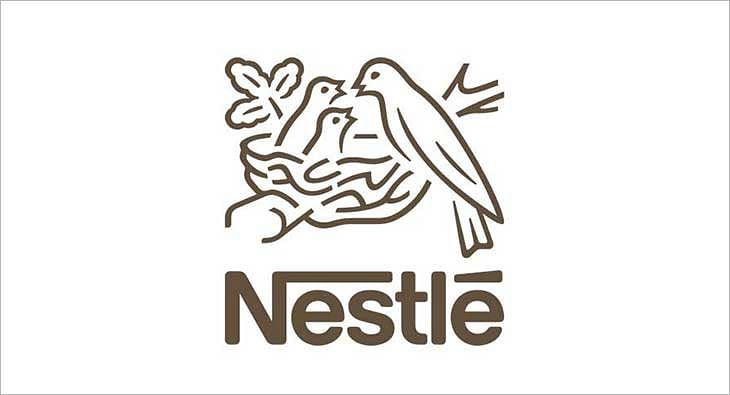

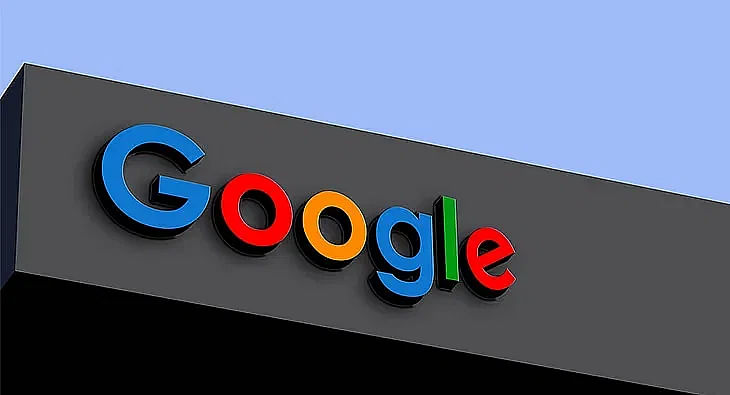






 Share
Share